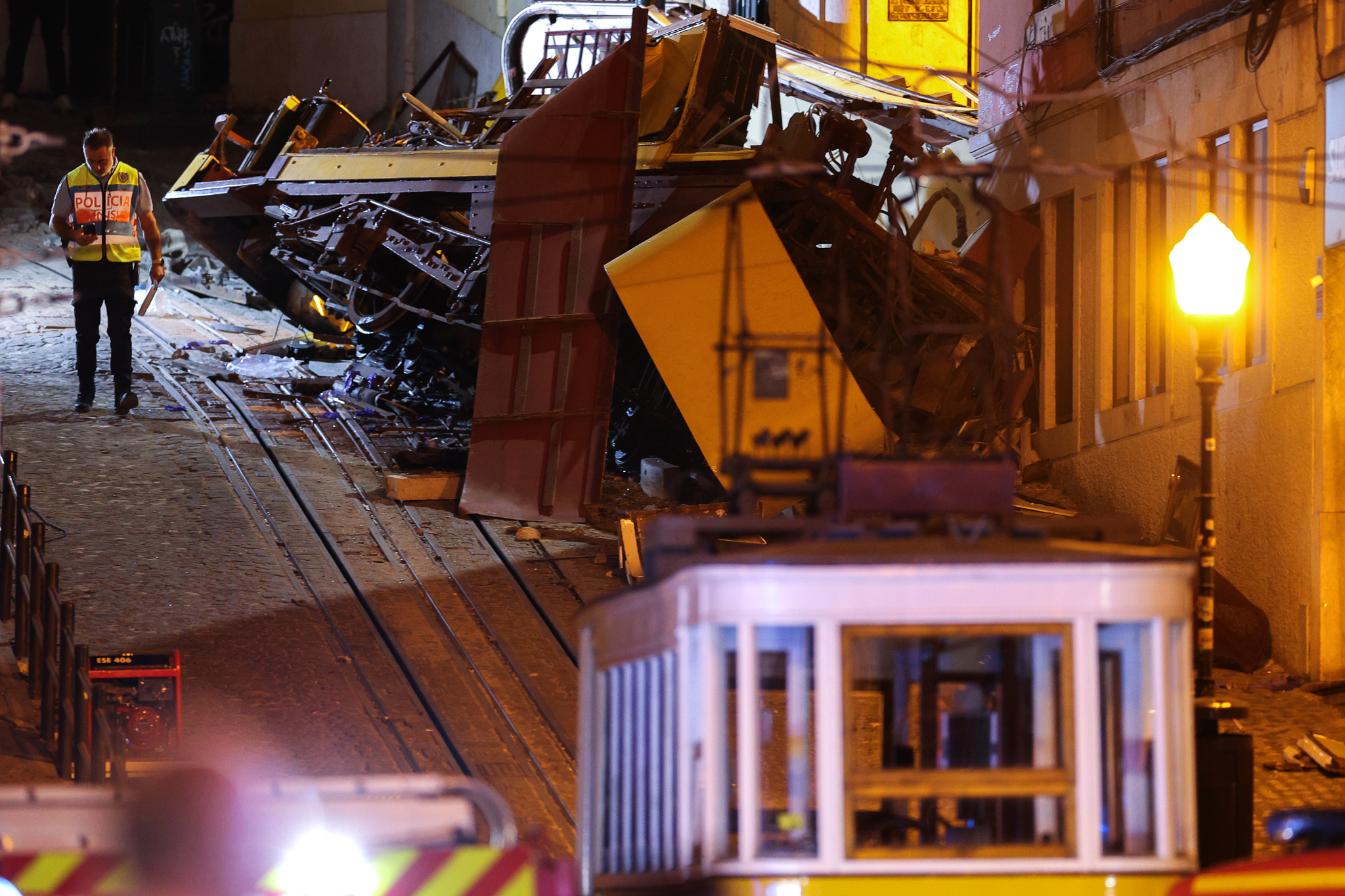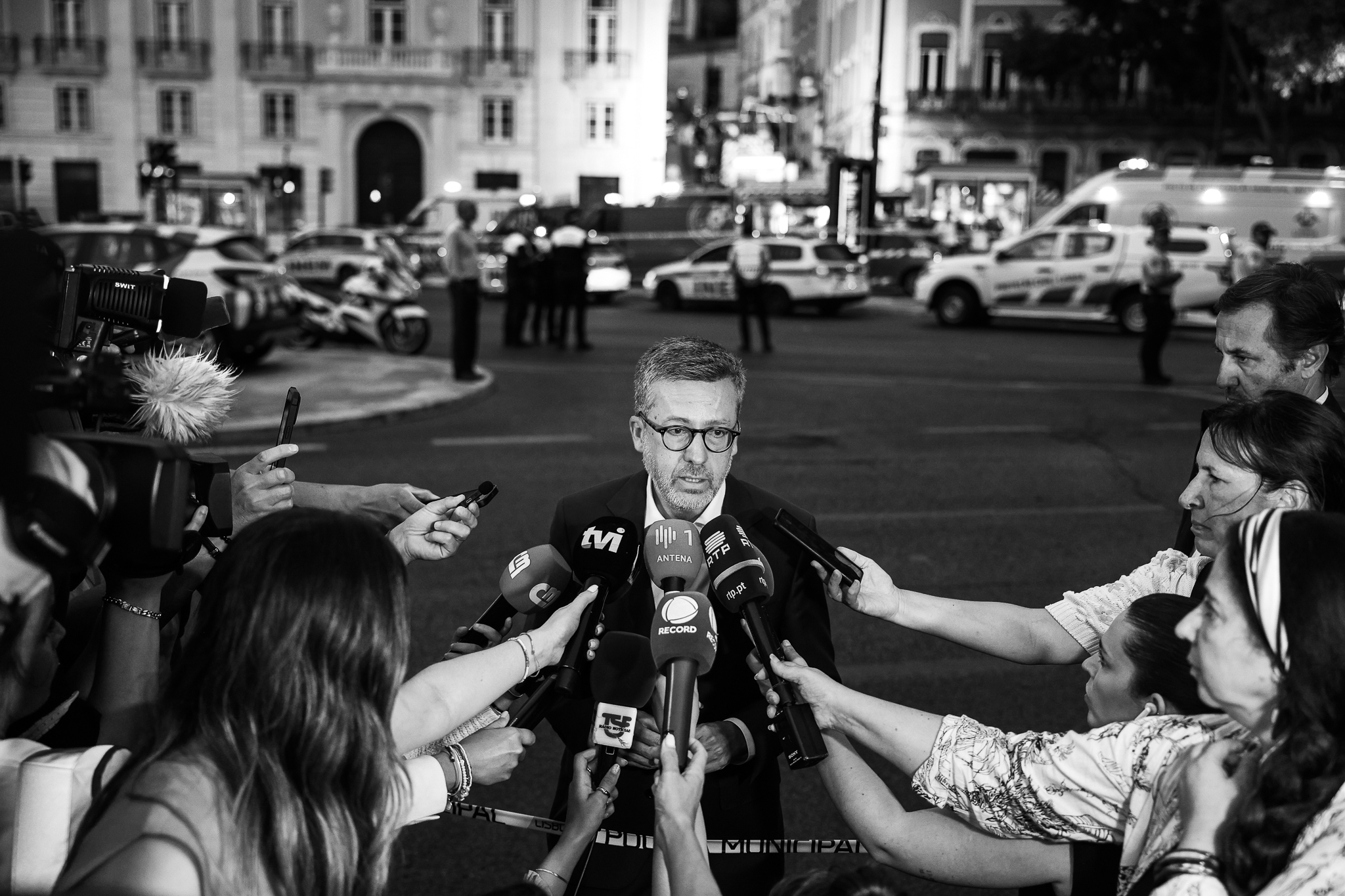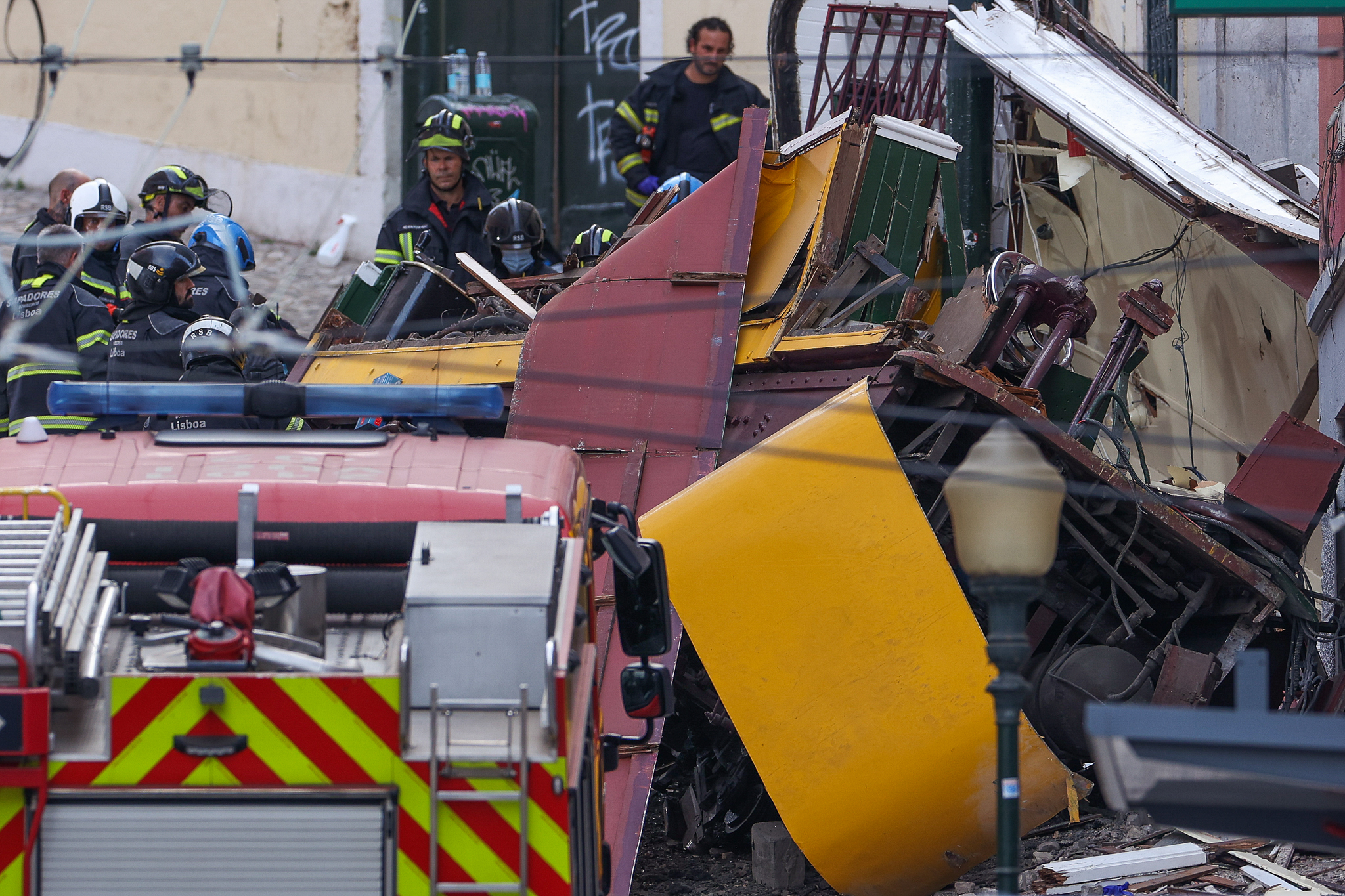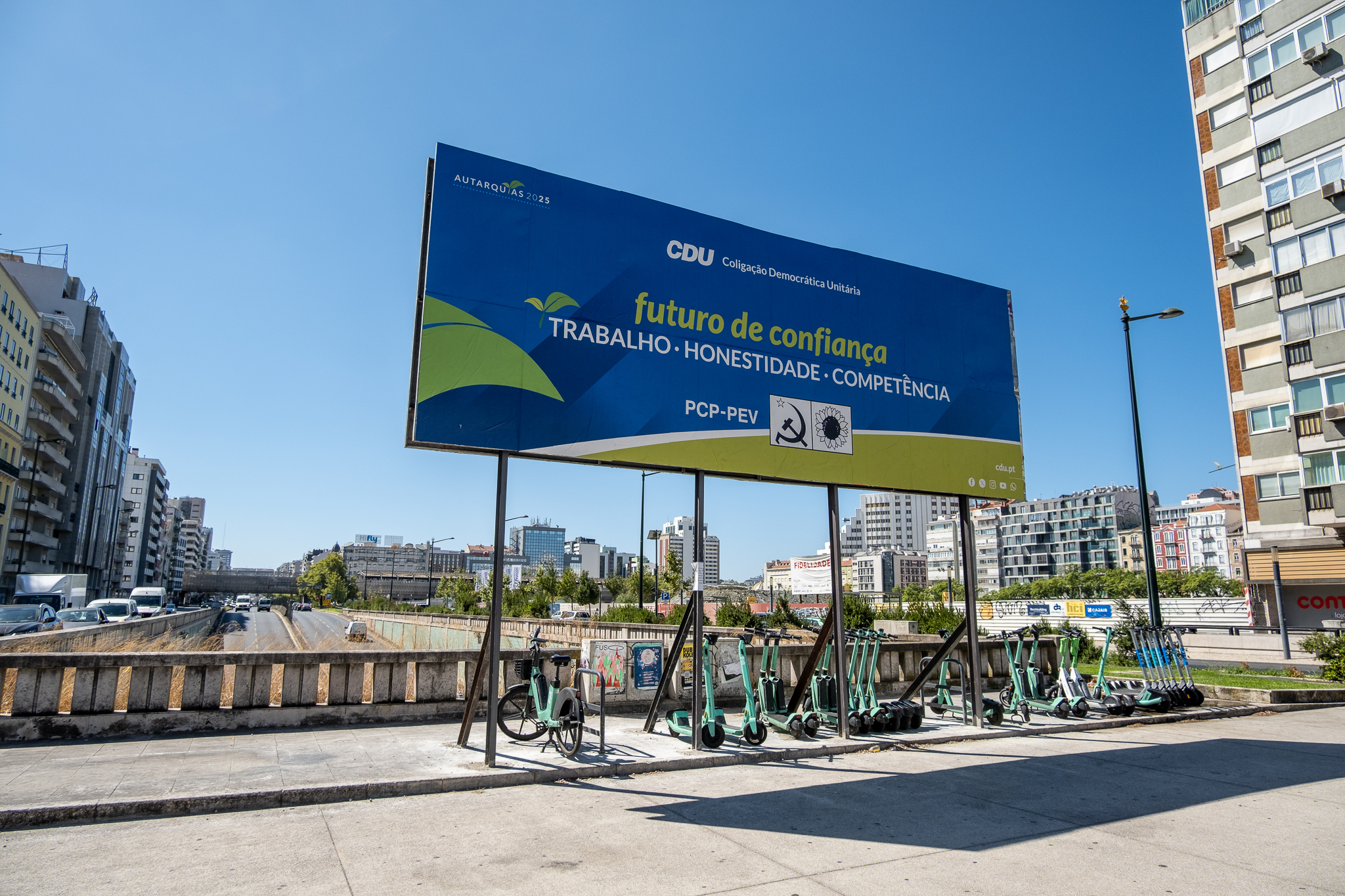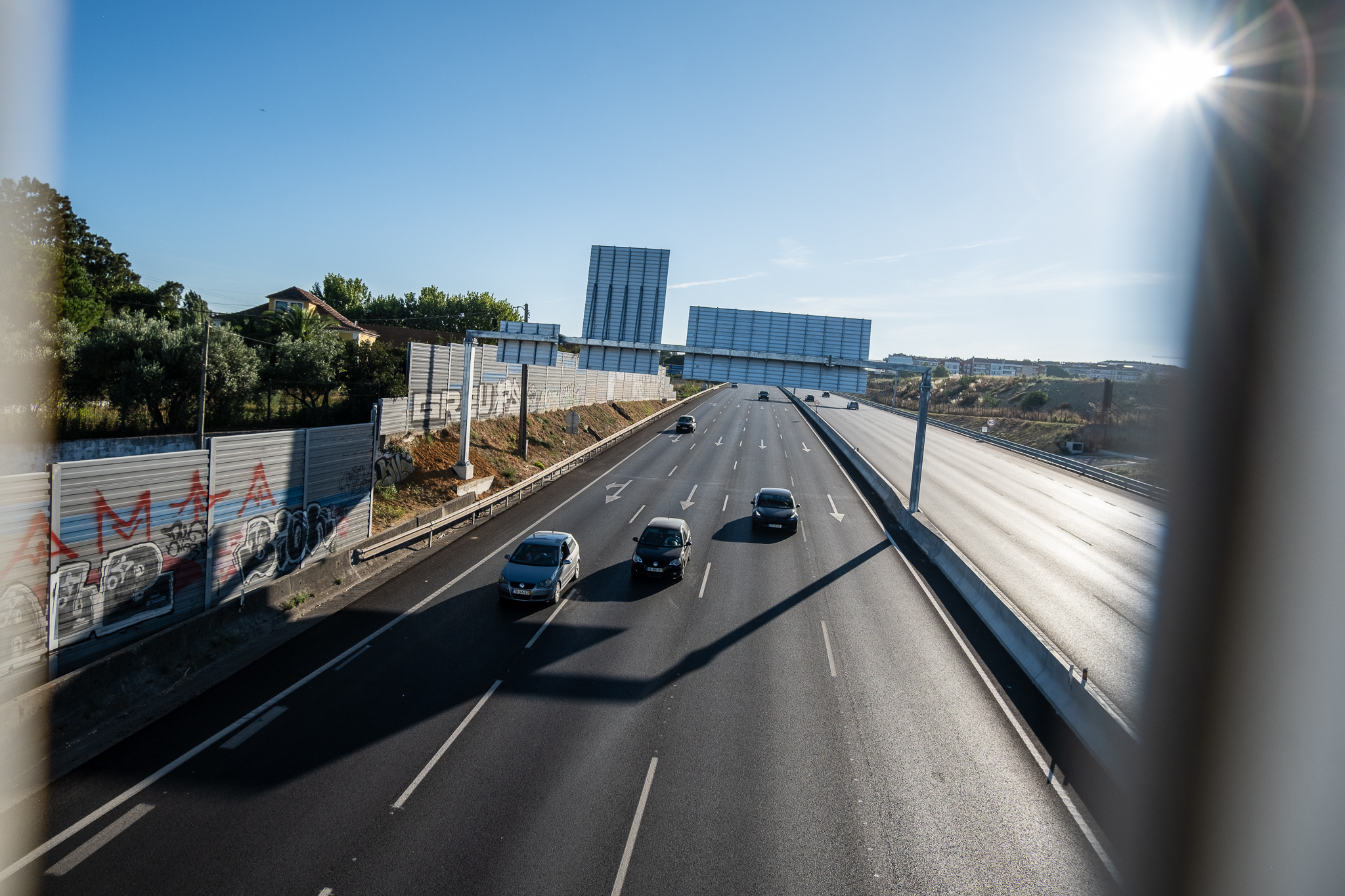At a time when the possibilities of using mushroom mycelium in architecture are being explored, three young people propose using this biomaterial to create shelters for streetcar and bus stops in Lisbon. Their proposal earned them a distinction at the New European Bauhaus Awards.
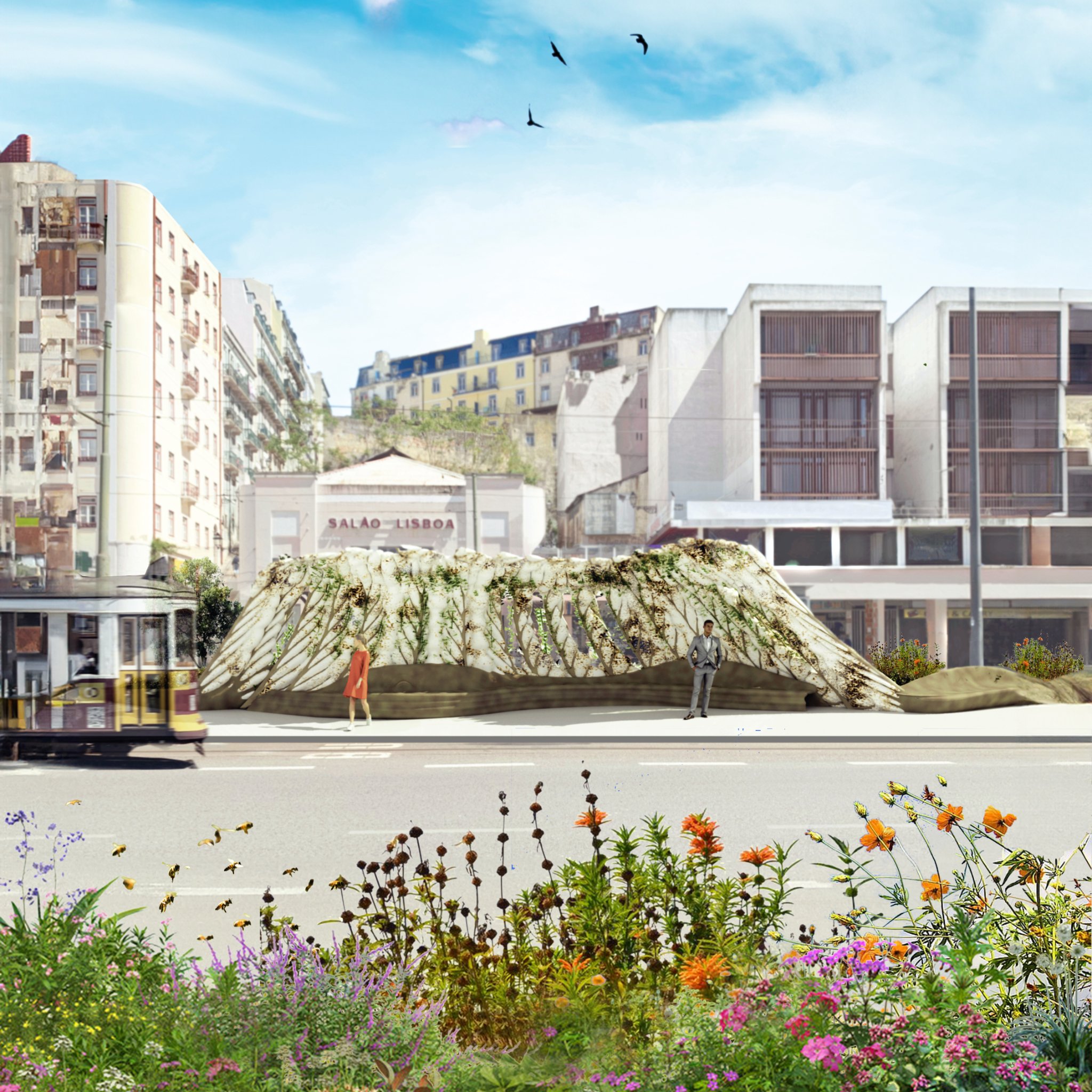
What if the streetcar stop 28 at Martim Moniz was shaped like a shell? What if that shell was made of a biomaterial obtained from mushrooms and other fungi? This was the proposal presented by Portuguese Rita Morais, Polish Natalia Piórecka and Chilean Jennifer Levy at the most recent edition of the New European Bauhaus Awards, and which ended up as one of the 20 winning projects. The awards ceremony took place in Brussels on April 12.
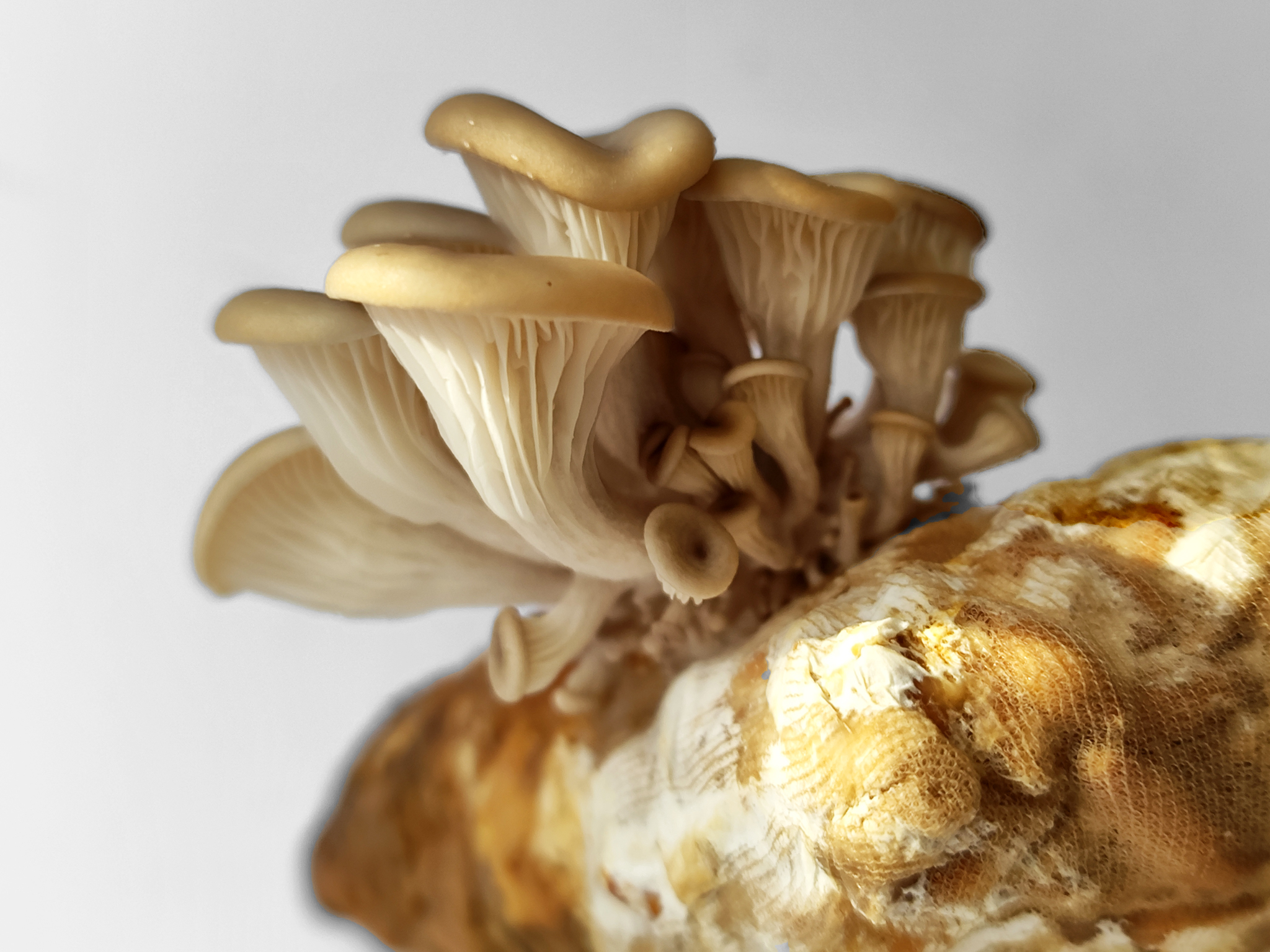
Rita, Natalia and Jennifer's idea is called Urban MYCOskin and suggests using mycelium as a biological material to create more sustainable and "bioreceptive" urban infrastructures, significantly reducing environmental impacts and stimulating a circular economy. The mycelium is the vegetative part of mushrooms and other fungi and it is through it that these living organisms receive the nutrients they need from the soil; the mycelium consists of a branched mass of small diameter filamentsand has been studied as a possible building material.
Taking the Martim Moniz 28 streetcar stop as their working object, the group proposed a shelter made from mycelium and 3D-printed elements capable of providing structure, along with a metal skeleton. The authors say that this solution promotes biodiversity and climate resilience in city areas, aligning closely with global sustainability goals. In fact, through the use of geometric topologies informed by environmental simulations, the Urban MYCOskin seeks to establish a microclimate in areas vulnerable to extreme temperature rises - as Martim Moniz suggests - by helping to redirect rainwater, create shade, passive ventilation and plant growth in specific areas.

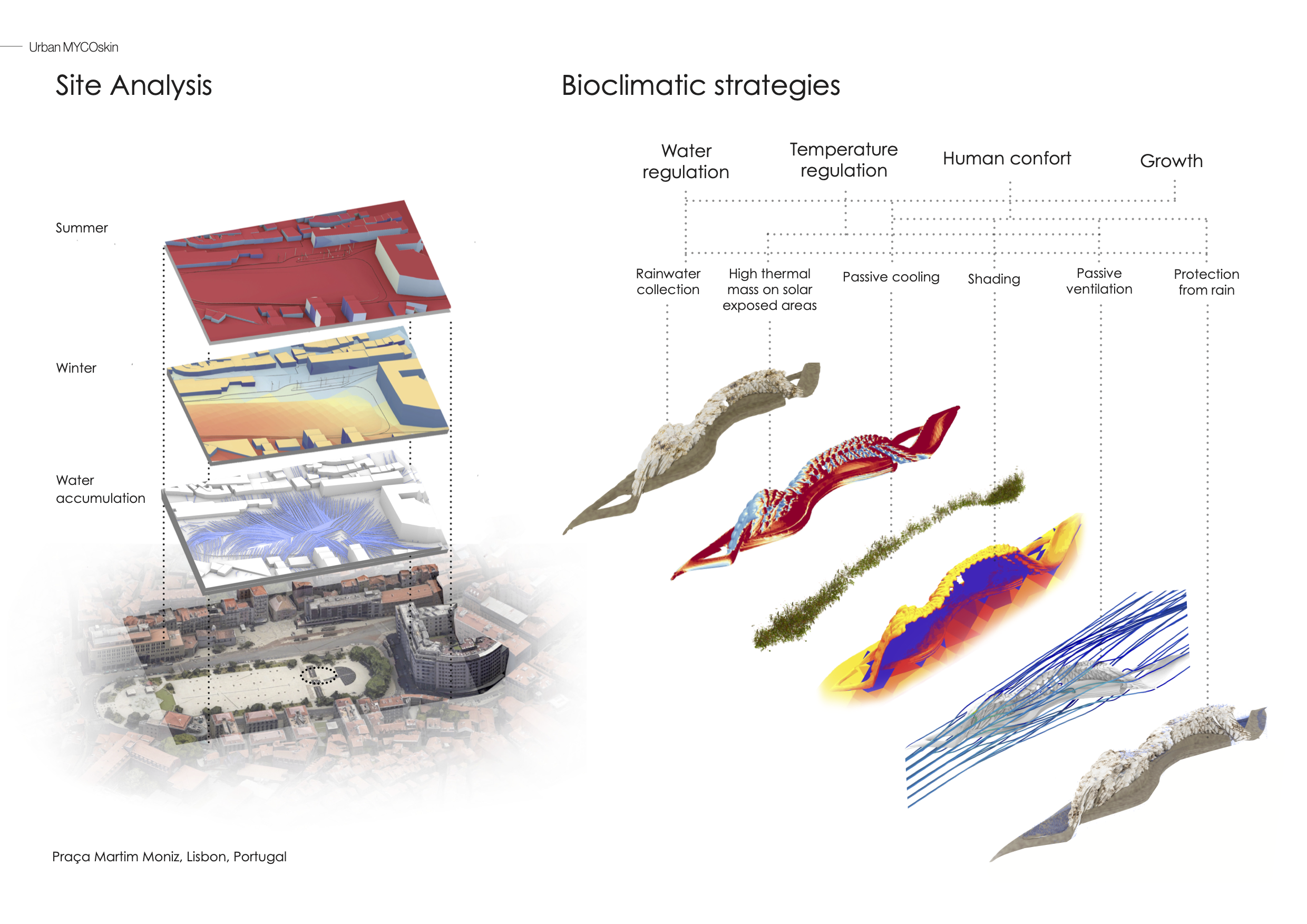
At the same time, since mycelium is a material of nature, the infrastructure of the streetcar stop would be biodegradable, which means less environmental impact in terms of waste. On the other hand, the group proposes using agricultural and textile waste by decomposing it to produce materials that can be used at these streetcar and bus stops. The authors are talking about the idea of a public transport shelter, but the same techniques and materials could be used to build other urban elements, such as seating areas in Praça do Martim Moniz.
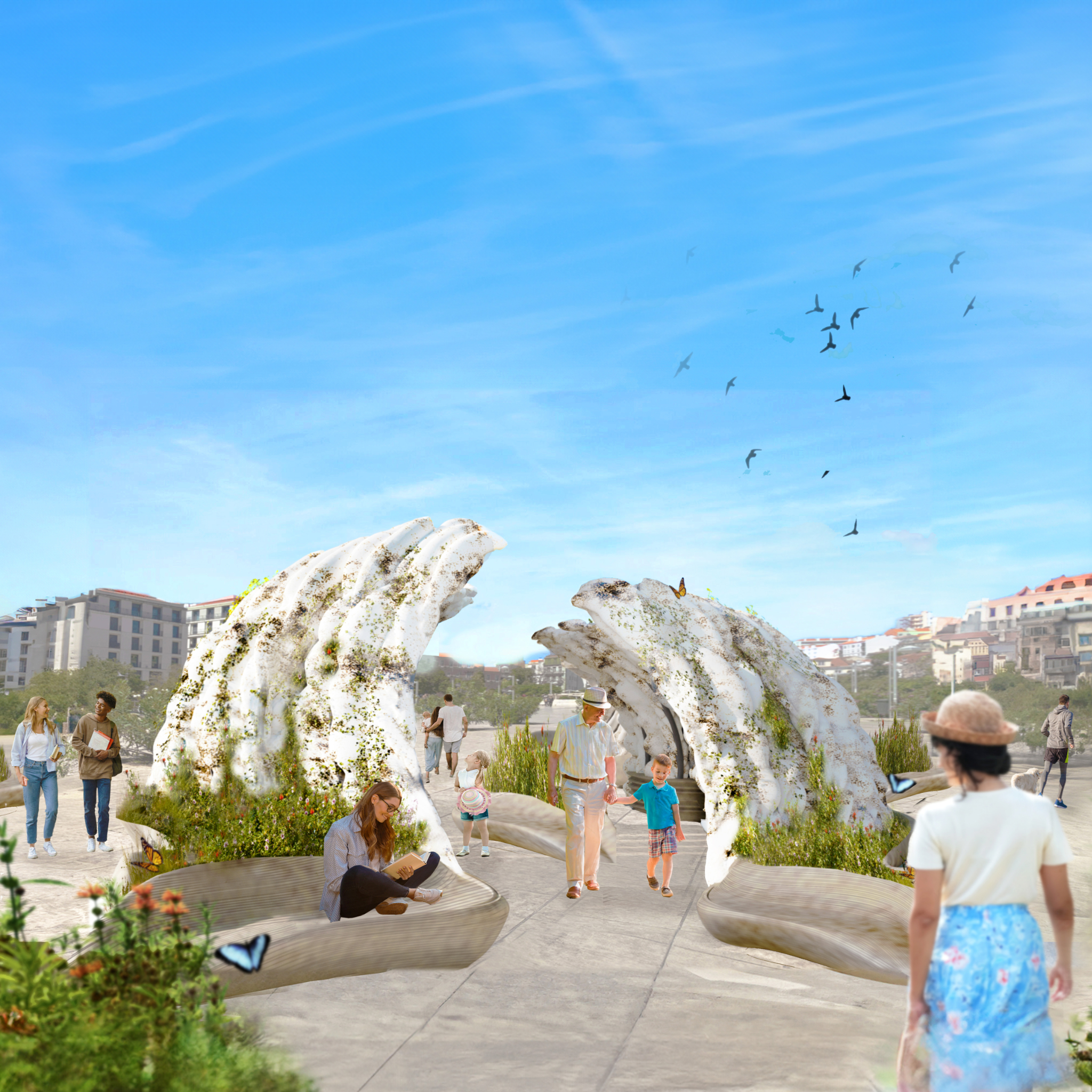
The award-winning authors bring together diverse set of skills from architecture, design and scienceusing them to respond to environmental challenges through innovative solutions called biodesign. The combined experience of the three in biomaterials and digital technologies has been important in broadening the horizons of sustainable design, they say. To Público newspaperThe three young women explained that, even so, creating a system that took advantage of the natural cycles of growth and decomposition of mycelium for urban structures was challenging and involved a detailed process of scientific research. As for the next steps, the authors would like to test their proposal in a real environment, looking for interested cities and policymakers.
The New European Bauhaus Awards aim to recognize and celebrate inspiring examples of transformations in physical spaces, experiences and everyday life, integrating the three values of the New European Bauhaus: sustainability, aesthetics and inclusion. At the ceremony on April 12, for the 2024 edition, a total of 20 prizes were awarded, and this was the fourth year in a row that Portugal had at least one winning project. In fact, in this edition, two projects were distinguished in the "Rising Stars" category, which honored young people under the age of 30 - the Urban MYCOskin took first place in this category, in second place the project remains Hydroscape Lisbonwhich we talked about here.
For now, you can get to know the Urban MYCOskin in more detail here:

